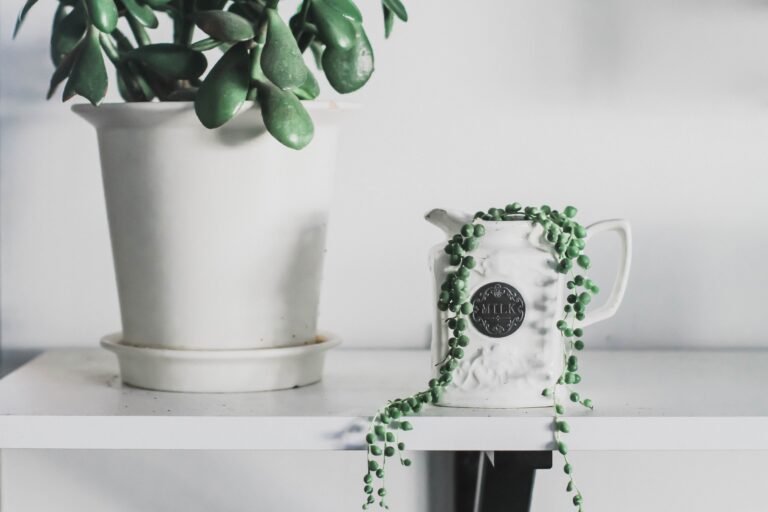The Wild Indoors No.4: A Guide to Houseplants

Welcome to part 4 of a 5-part blog post series, The Wild Indoors. This is a collaborative series written together with Leah Bennett, who is a sustainability writer and researcher. Over the next 5 posts, we’ll be sharing tips on how to bring more nature into your life in a variety of ways, even when you are staying because of lockdown.
Leah shares her guide to all things houseplants.
With the lockdown restrictions heavily in place, going outside to enjoy nature can be a challenge. So why not bring nature to you?
Having houseplants or turning your garden into a private floral oasis is a fantastic way to do this. Just the sight of green plants and blooming flowers can bring anxiety levels down and help you feel calm and relaxed. Looking after plants can also give you a sense of reward and purpose, as by nurturing them you get to watch them grow.
What’s more, a lot of studies have suggested that surrounding yourself with plants and greenery can have a positive impact on psychological, cognitive, and physical health. So whilst you’re taking care of the plant you can be assured that it is also taking care of you.
Read on to find out how to pick your perfect house plant and spruce up your garden!
Things to keep in mind when choosing a houseplant
- Although a lot of plants are called ‘indoor plants’, all plants naturally belong outside so it’s important to remember that you are trying to create an outside environment in your inside space. To do this, place a plant where it can easily receive sunlight, make sure you water it often enough, and remember that these two aspects of plant care are dependent upon the individual plant itself; every plant is different and each one will need personal care – no one said this would be easy!
- Evaluate how much light you have in your room before you buy any plants – you don’t want to bring it home to watch it die!
- Once this is done, you can buy plants that are adapted to how much light you have available; this could be a little or a lot – there’s a houseplant out there that’ll love to call any room you have a home.
Below I’ve listed different plants that like a variety of light so you can pick and choose according to the room you want your plant to live in. If sunlight really is hard to source in your house, you can buy fertilizer and grow lights to help the plant get the nutrition it needs!
Plants that like to live in the shade:
- Boston Fern
- Spider plants
- Peace lily
- Lucky bamboo
- Areca palm
Plants that like low light levels:
- Devil’s ivy (or really ivy of any kind)
- Snake plant
- Pothos
- Nerve plant
- ZZ plant
Plants that like direct sunlight levels:
- Croton
- Hibiscus
- Papyrus
- Dwarf umbrella tree
- String of Pearls
Types of houseplants I would recommend:
For more information on houseplants, plant deliveries, groovy pots, or anything else botanical related, visit PATCH’s website. They’ve even done the hard part and named them already! https://www.patchplants.com/gb/en/
Eco-Friendly Houseplant Pots:
It is very important to remember that your houseplant needs to drain the water you give it. To ensure that this happens, make sure you place it in a pot with a drainage hole at the bottom (and put a plate underneath if you are not going to transfer this into another bigger pot).
Here are some wonderful eco-friendly plant pots that look amazing whilst ensuring a low impact on the environment:
- https://www.ecopots.co.uk/ – Ecopots develop beautiful pots made from recycled plastic that are not only durable but incredibly stylish.
- http://www.etsy.com/ – Etsy is a worldwide marketplace that supports small personal businesses in your local area. If you search for eco-friendly plant pots you will discover an array of creativite options and the chance to support a small business close to home – what’s not to love!
- Patch also sell a lovely range of clay pots that are affordable and look phenomenal – https://www.patchplants.com/gb/en/pots/clay-pot-275/
Outdoor Plants to Help Save the Bees:
Bees are an integral part of our ecosystem. They are responsible for keeping the cycle of life turning. That’s quite a big responsibility for such a little creature so read on to find out what you can plant in your garden to help them do their job.
- Bees can see the colour purple easier than any other so plants like lavender, buddleja, catmint, and alliums (all of which have purple flowers) will attract bees to your garden.
- Once there, plants such as foxgloves, honeysuckle, snapdragons, and penstemons have tubular-shaped flowers and therefore are an important source of food for bees with a long-tongue, such as the garden bumblebee.
- Spring flowers for bees include crab apple, bluebell, crocus, forget-me-not, hawthorn, primrose, bugle, rhododendron, and rosemary.
- Early-summer flowers include foxglove, honesty, hollyhock, comfrey, snapdragon, thyme, and potentilla.
- Late-summer flowers include buddleja, dahlia, globe thistle, heather, ivy, lavender, aster, scabious, and penstemon.
- Most bees are active from March through to September although some do wake from hibernation at the start of a mild winter so make sure you have pollen or nectar-rich plants flowering in the colder months. Plants such as winter clematis or the winter honeysuckle would be perfect for this.
Author:
I’m Megan, a UK blogger and content creator navigating IBD life. I create wellbeing and sustainability content to help you to take care of your wellbeing and the environment.





